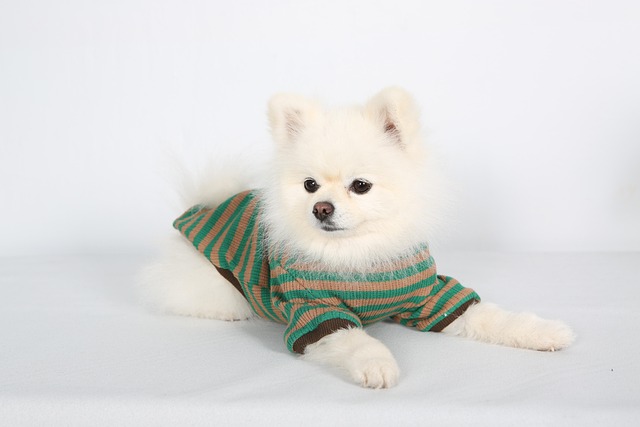
How can I tell if my dog's heatstroke is serious
Let’s be real: It’s a sticky August morning in Los Angeles, and you took your 2-year-old Golden Retriever, Max, for a walk a little later than usual
Keeping your dog’s teeth clean doesn’t have to be a battle—with the right approach, it can even become a bonding ritual. The key is to start slow, especially if your pup isn’t used to having their mouth handled. Most vets agree that regular brushing is the gold standard, but it’s not the only way. Let’s break down the easiest methods that fit into everyday life, while keeping in mind what’s safe and responsible for your furry friend.
Start with the basics: a soft-bristled toothbrush designed for dogs and enzymatic toothpaste. Never use human toothpaste—it contains ingredients that can upset their stomach. Begin by letting your dog sniff and lick the toothpaste (most are flavored like chicken or peanut butter, which they love). Then, gently lift their lips and brush in small circles along the gum line. Focus on the outer surfaces of the teeth—those are where plaque builds up fastest. Even 30 seconds a day makes a big difference.
If brushing feels like a struggle, dental chews can be a game-changer. Look for products approved by veterinary dental associations, as they’re designed to reduce plaque while your dog chews. Avoid hard chews that might crack teeth, and always supervise your dog while they enjoy them. This isn’t just about convenience—choosing the right chews helps keep them safe, which matters when local regulations often emphasize pet welfare.
 Another low-effort option is water additives. These go straight into your dog’s water bowl and help reduce bacteria in their mouth. They’re great for busy days when brushing slips your mind, but they work best as a supplement, not a replacement, for other methods. Just check the ingredients to make sure they’re safe for long-term use—some additives might not be suitable for puppies or dogs with certain health conditions.
Another low-effort option is water additives. These go straight into your dog’s water bowl and help reduce bacteria in their mouth. They’re great for busy days when brushing slips your mind, but they work best as a supplement, not a replacement, for other methods. Just check the ingredients to make sure they’re safe for long-term use—some additives might not be suitable for puppies or dogs with certain health conditions.
Dental wipes are another handy tool. They’re pre-moistened with gentle, dog-safe solutions that wipe away surface plaque. Simply wrap a wipe around your finger and gently rub it along their teeth and gums. They’re perfect for quick touch-ups, like after a meal, and are easy to use when you’re on the go. Plus, they’re less intimidating for dogs who get nervous about brushes.
Don’t forget about their diet. Crunchy kibble can help scrape away plaque as your dog chews, compared to wet food which tends to stick to teeth. Adding dental-specific kibble or mixing in freeze-dried raw bits can make mealtime work double duty for their oral health. Just make sure any dietary changes are gradual to avoid upsetting their digestion—a good practice no matter where you live.
It’s important to stay on top of regular vet checkups, too. Many places require annual exams, and your vet can spot early signs of gum disease or tooth decay that you might miss. Catching issues early not only keeps your dog comfortable but can also prevent more expensive treatments down the line. Plus, some areas have guidelines about pet health that include dental care as part of responsible ownership—staying proactive keeps you and your pup on the right side of local norms.
Remember, consistency beats perfection. Even if you can’t brush every day, combining a few of these methods will help keep their smile bright. Watch for signs like bad breath, swollen gums, or difficulty eating—these could mean it’s time for a vet visit. Your dog can’t tell you when their teeth hurt, so it’s up to us to stay vigilant. After all, a healthy mouth means a happier, more energetic companion, and that’s something every dog lover wants.

Let’s be real: It’s a sticky August morning in Los Angeles, and you took your 2-year-old Golden Retriever, Max, for a walk a little later than usual

You're enjoying a summer afternoon at the park when you notice your dog has stopped panting and appears disoriented - their gums are bright red

Let’s paint the picture: You’re in your Denver apartment, watching your 4-year-old Boston Terrier, Ruby, plop down mid-play session with her favorite toy

Many dog owners notice their pets nails seem shorter after regular walks,but how much does this daily activity actually help?The answer depends on where you walk—concrete sidewalks or asphalt streets gently file nails as a dog's paws hit the ground

Most dog owners notice their pup scooting across the carpet at some point, but few connect it to impacted anal glands. These small sacs near a dog’s rectum secrete a scent for marking territory

Most vets agree that regular dog teeth cleaning is key to avoiding painful dental issues later. For healthy adult dogs, a professional cleaning at the vet’s office every 12 to 18 months usually works well.